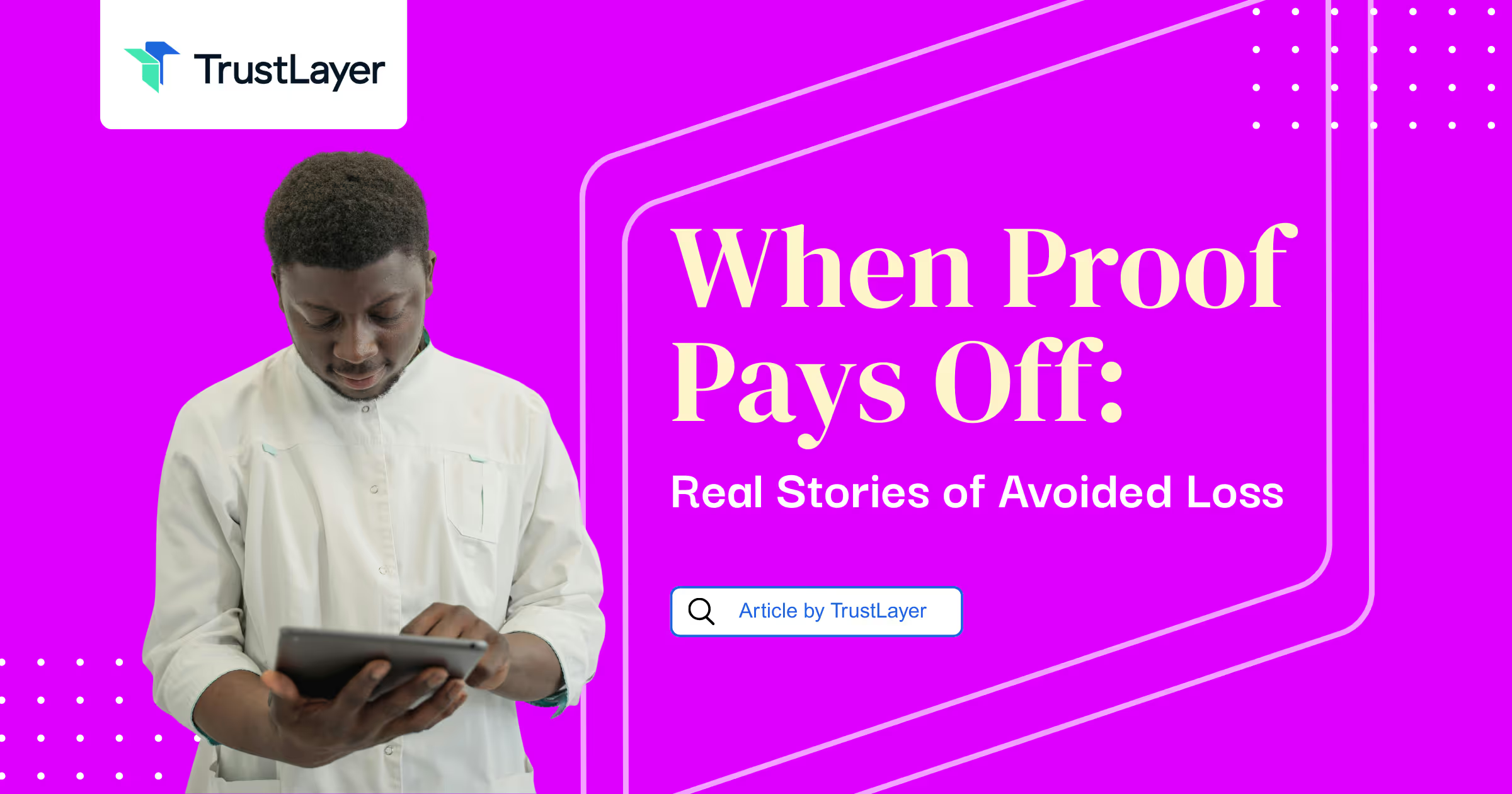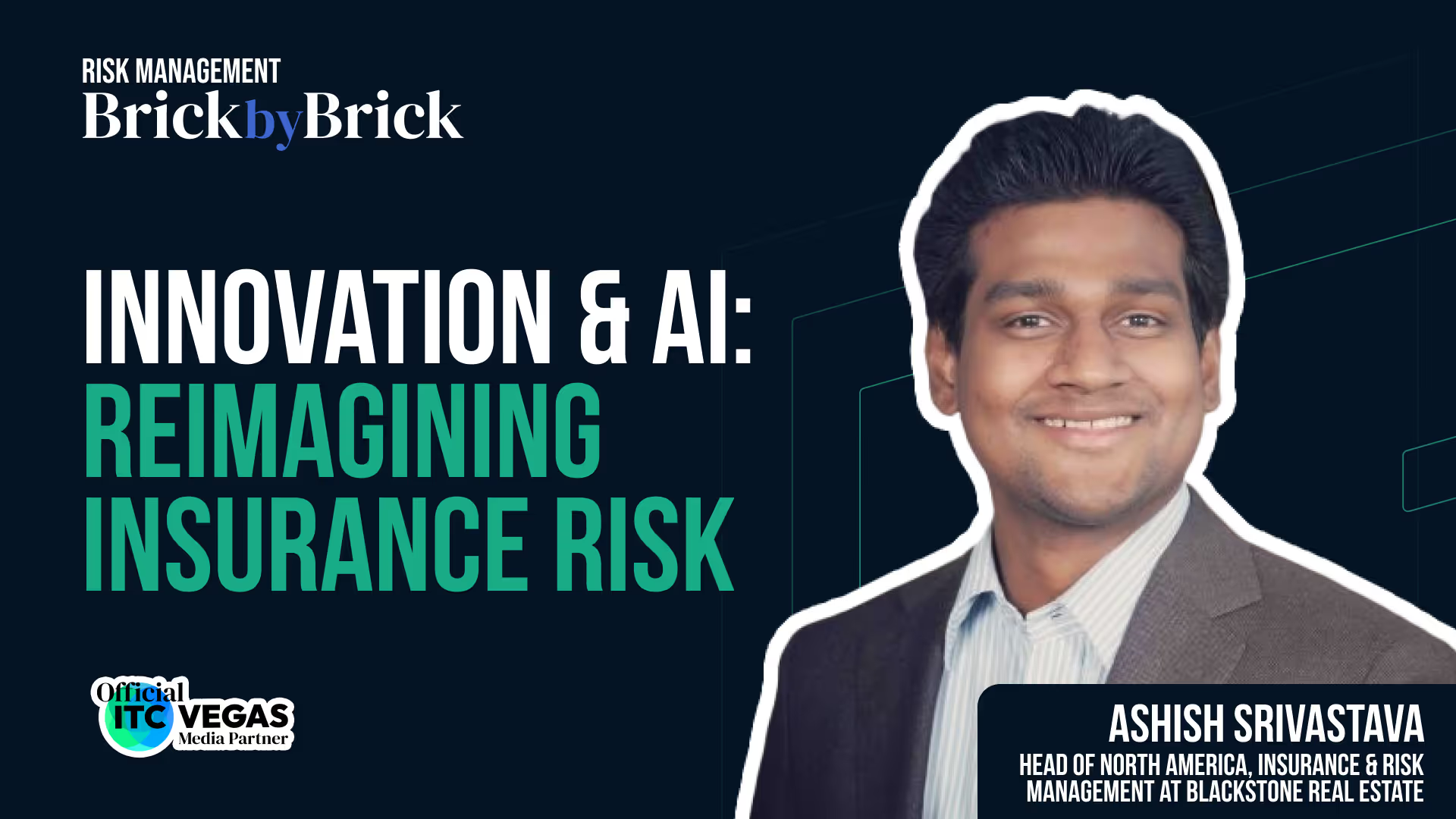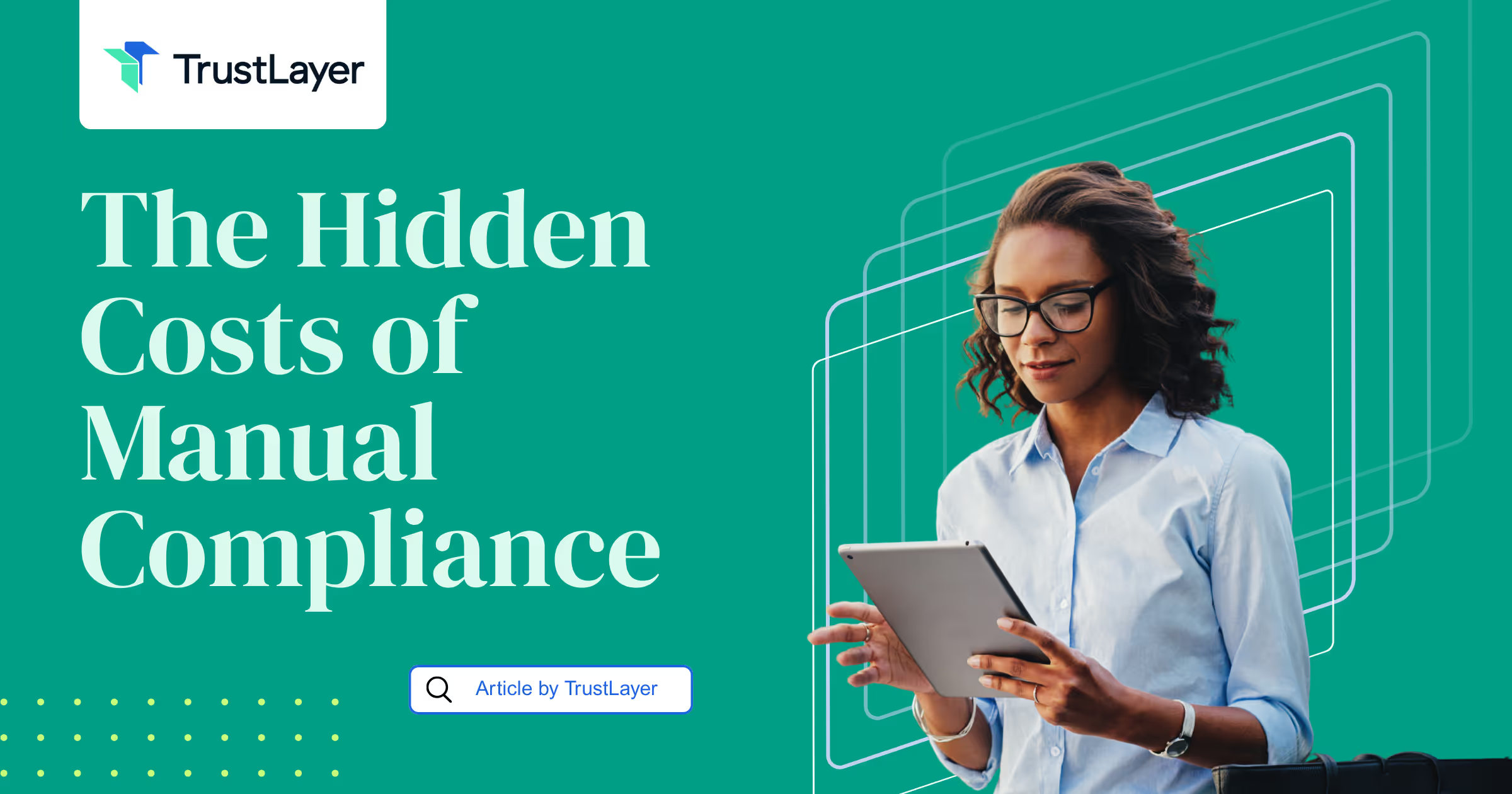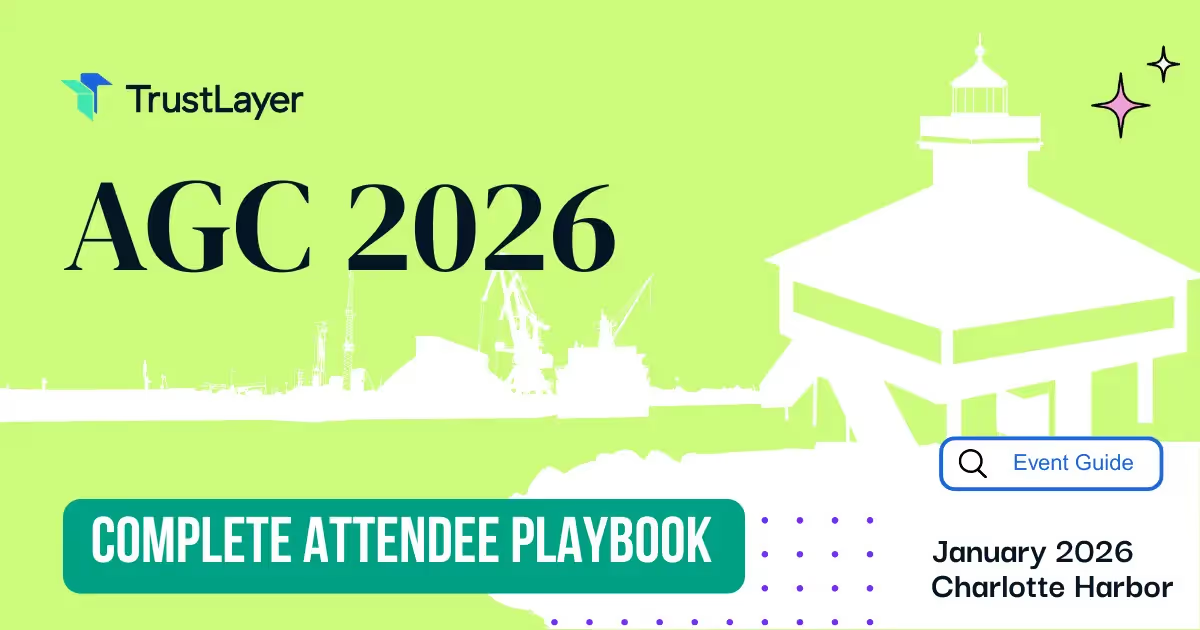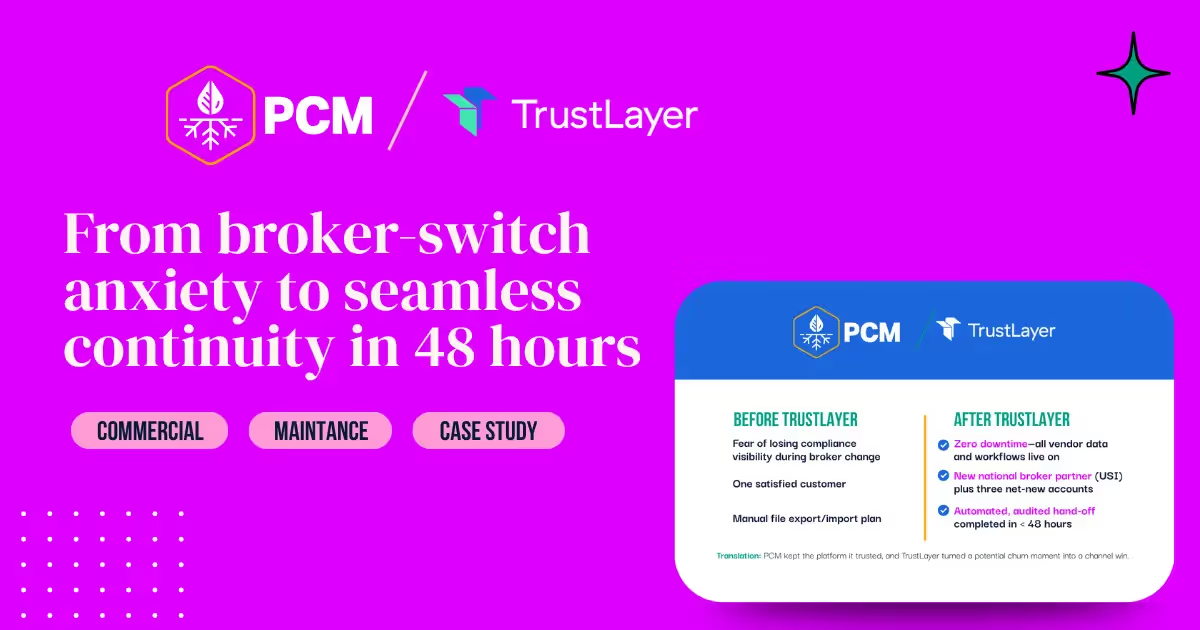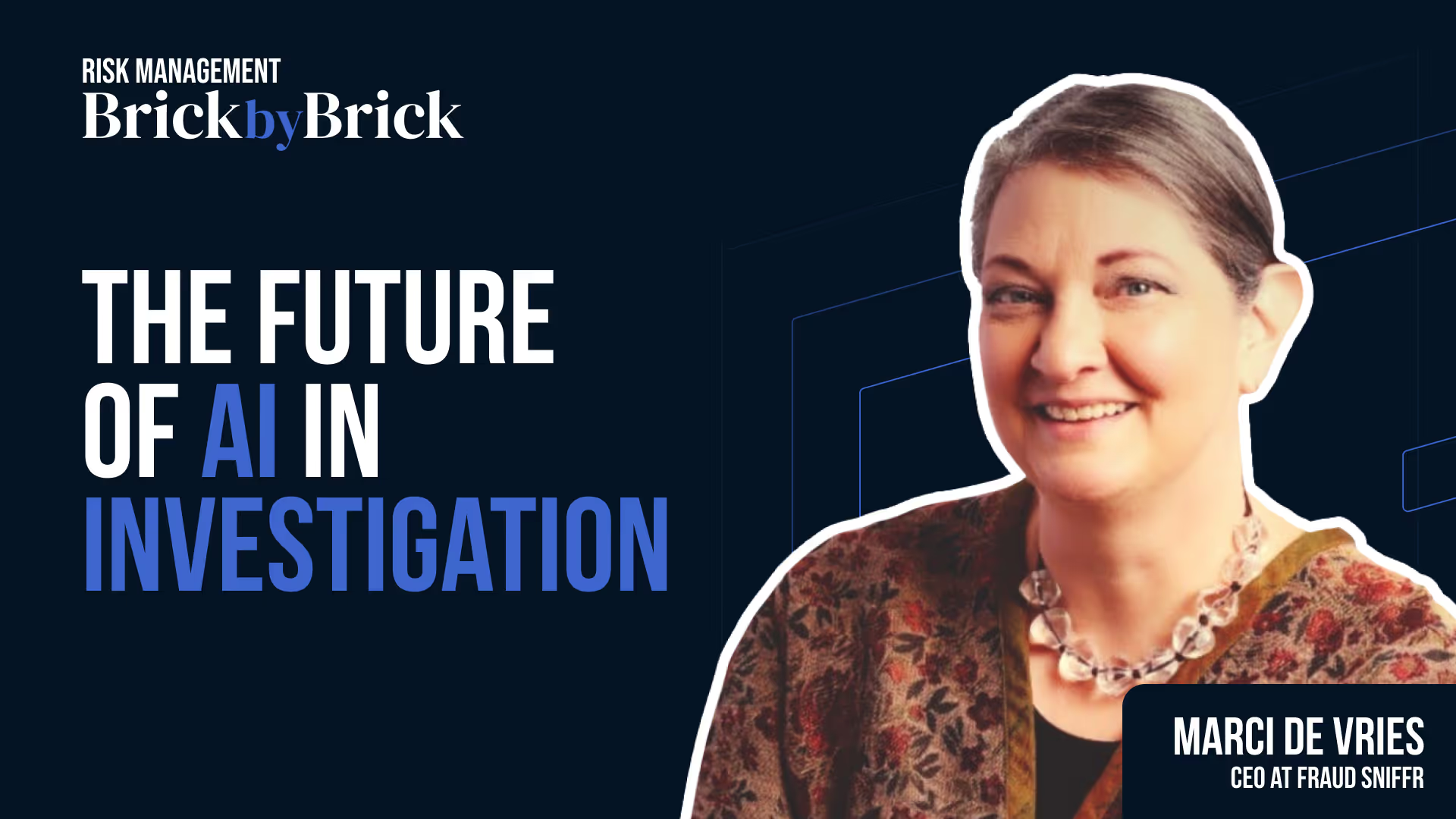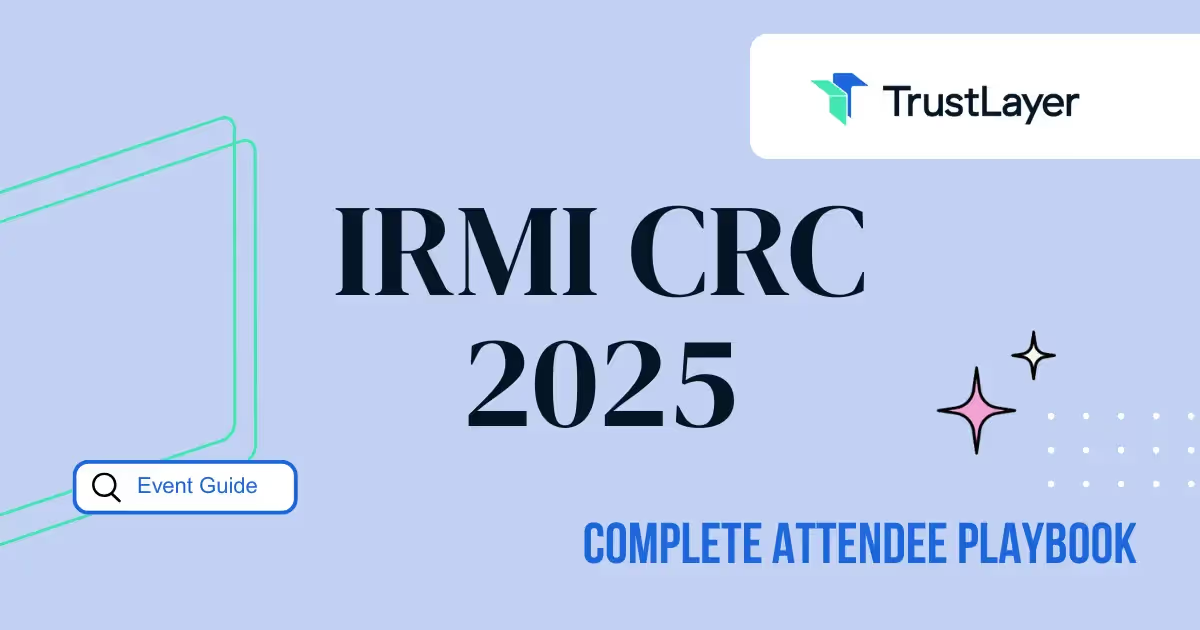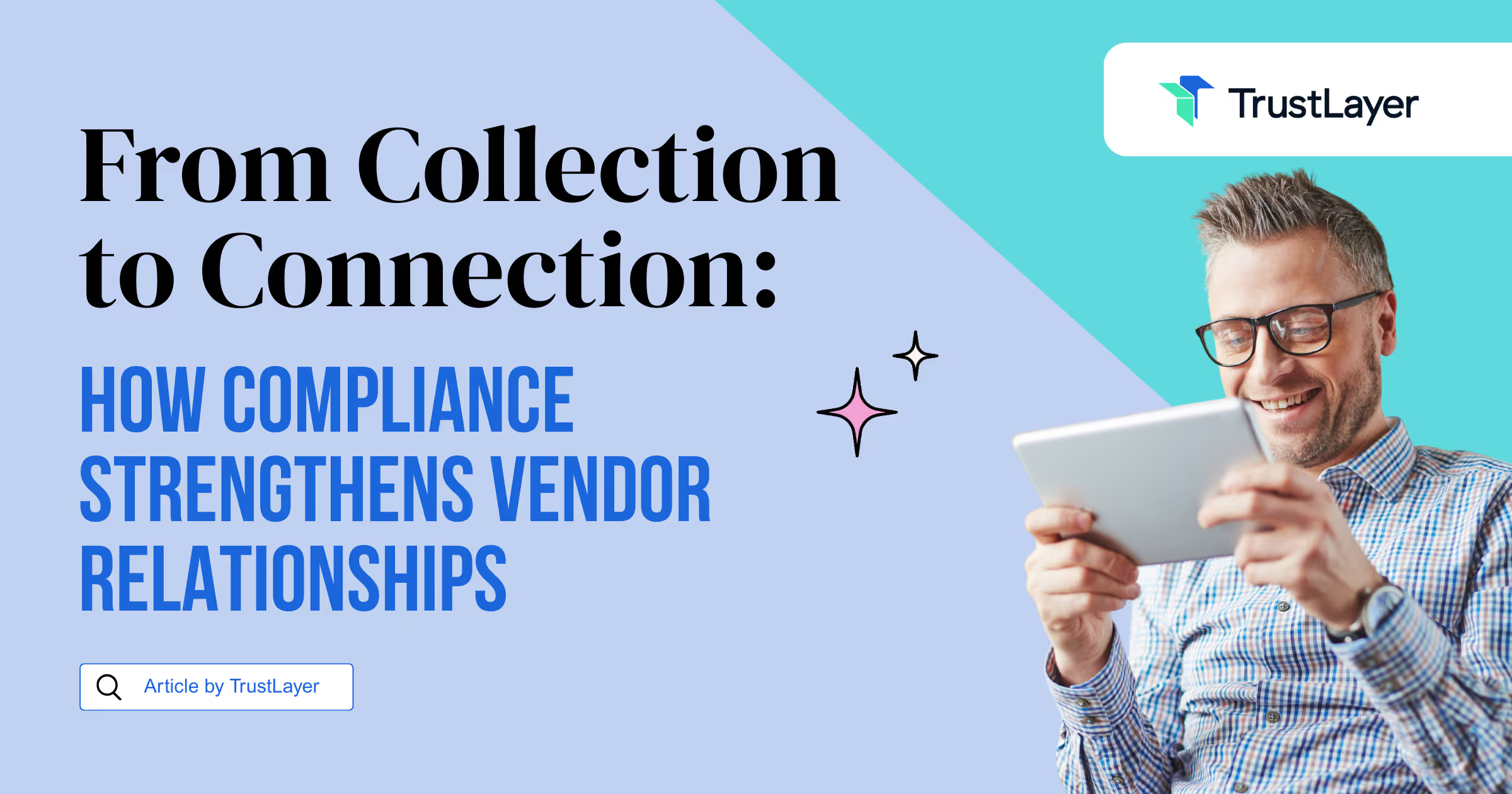TrustLayer Document Intelligence: Smarter Compliance Without the Spreadsheets

TrustLayer Document Intelligence: Smarter Compliance Without the Spreadsheets
Let’s say you’ve just received a hundred COIs from subcontractors. Some are perfect. Most are off. A few look like they were faxed from a bunker in 1993. If your current process relies on rigid templates and manual reviews, congratulations: you’re about to spend your day inside a spreadsheet. Again.
This is where the flip happens.
Not for us. For you.
Because TrustLayer’s platform is evolving—fast. Document Intelligence is already transforming how you classify, understand, and extract key compliance data from your insurance documents using AI.
The Old Way: Manual Reviews, Misfiled Docs, and Burnout
Traditional document classification software treats compliance like it’s still 2007. It assumes every COI follows a standard format (it doesn’t), every W9 is cleanly scanned (it isn’t), and your team has time to correct errors line by line (you don’t).
Most systems fail when documents deviate even slightly from their expected layout. A field is misaligned? Kicked to manual review. Insurer names abbreviated? No match found. A custom endorsement buried in fine print? You’re scrolling through 6 pages hoping it’s there.
It’s not just frustrating. It’s risky.
This is how non-compliance slips through. This is how audits fail.
The Now: Smart Classification That Doesn’t Care About Format
Today, TrustLayer users can rely on Document Intelligence—an AI-supported system that classifies documents automatically and extracts key fields from the most common insurance forms.
We're starting with the essentials: ACORDs, W9s, and policies.
When you upload a document, TrustLayer detects its type. It pulls data like insurer names, policy numbers, and expiration dates from the ACORD. It knows the difference between a Certificate of Liability Insurance and a W9. It captures the data you need to verify whether your vendor meets basic compliance.
You’re no longer starting at zero. You’re starting with structure.
What’s Different (and Why It Matters to You)
Unlike brittle legacy tools, TrustLayer doesn’t require templates. The AI looks at the document’s structure and content to make classification decisions. This means:
- You get fewer manual review flags.
- You can process more documents, faster.
- You avoid compliance gaps from overlooked fields.
No more waiting for custom rules to be written. No more rejected uploads because the form is a little “weird.”
What’s Coming Next: Teach the System, Trust the System
This is just the beginning.
TrustLayer is building toward a future where you can define your own extraction rules. Want to capture a specific additional insured clause from a non-standard policy? Soon, you’ll teach the system once—and it’ll remember.
We’re working closely with industry leaders in AI and document automation to build the next phase, which will include:
- Flexible extraction zones
- Custom field logic
- Confidence scoring
- Human approval workflows for exceptions
The goal? You guide the AI. It learns what matters to your business.
Until then, the AI is already working—and improving with every upload.
What This Means for You
If you’ve been burned by overpriced compliance platforms that promise automation but deliver PDFs and prayer, you’re not alone. That’s why we’re rolling this out the way we are: gradually, transparently, and with practical value from day one.
You don’t have to trust the hype. Trust what it’s doing for you already.
FAQs
Q: What documents does TrustLayer support today?
A: COIs (like ACORD 25), W9s, and commonly submitted insurance policies are currently supported by our Document Intelligence system.
Q: Is this AI fully autonomous?
A: No. It’s AI-assisted with human-in-the-loop support to ensure accuracy. Extraction is available only for structured forms.
Q: Can I edit extracted fields?
A: Yes. You can review and override any extracted value within the platform.
Q: What happens if the AI gets it wrong?
A: While errors can happen, low-confidence results are flagged, and a human review process helps catch issues before they become risks.
Q: When will the advanced extraction capabilities launch?
A: They’re in active development. Got a specific use case? Tell us—your input will help us shape what’s coming.
You’ve seen what manual compliance looks like. You’ve felt the audit anxiety. You’ve chased down one too many missing W9s. It’s time for something better.
Tell us your document extraction wish list. Let’s build it together. Schedule a demo





